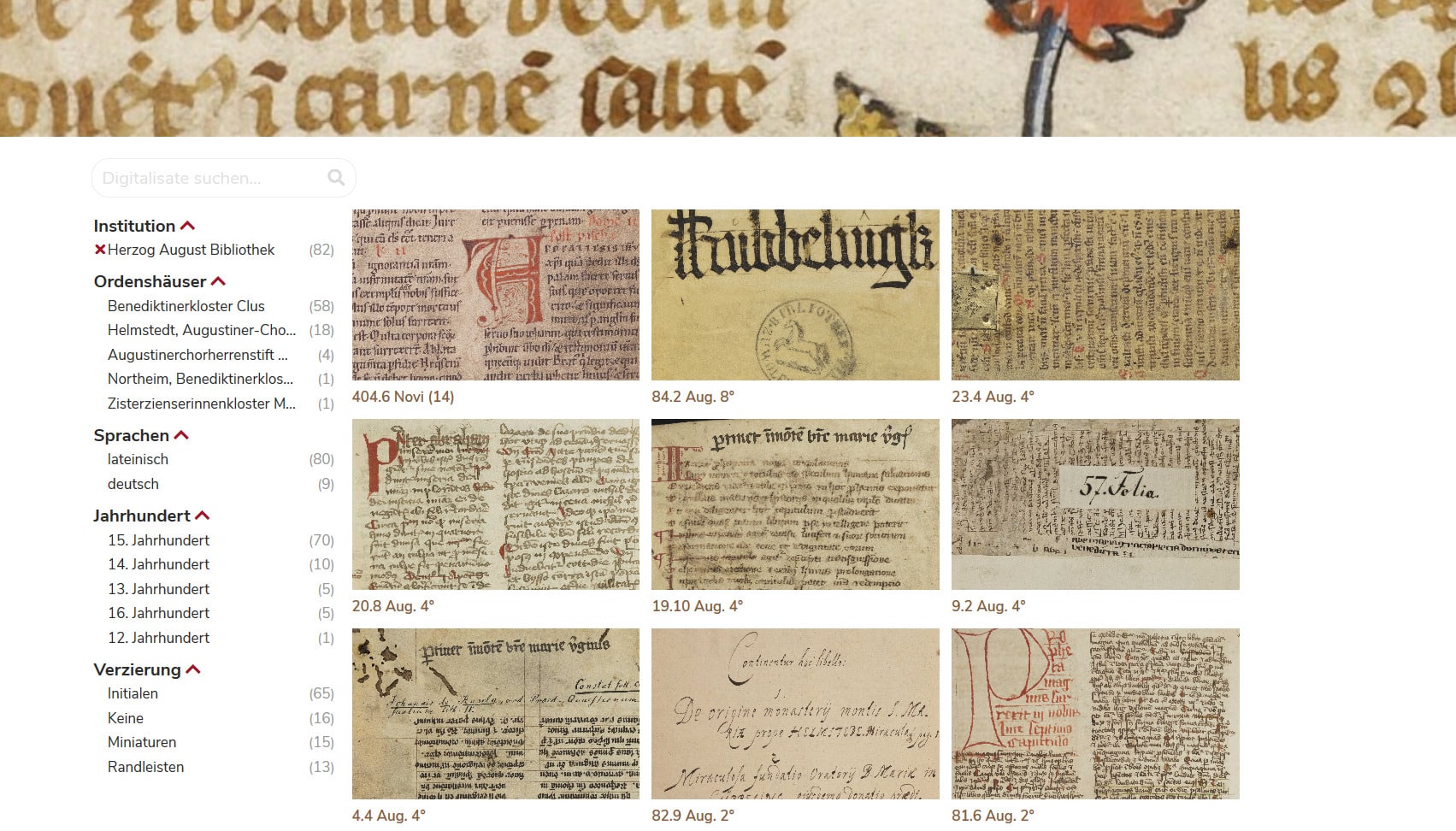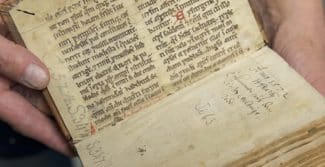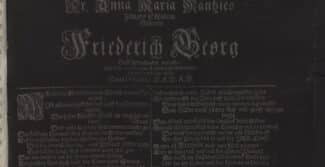24 June 2020
In December 2018 work began on a cooperation project between the Herzog August Bibliothek and the Bodleian Libraries Oxford. Funded by the Polonsky Foundation, the project’s aim is to digitise several hundred medieval manuscripts from German monastic libraries and make them freely available online with indexing data. Now well underway and with almost half the manuscripts digitised already, the project looks set to become a resounding success. On the official project website, the HAB for its part has uploaded 84 pages from around 200 manuscripts that had once belonged to the libraries of five North German monasteries, among them two lavish examples of medieval book illustration from the Dombibliothek Hildesheim (Hildesheim Cathedral Library), for online viewing.
In fact, a total of 123 manuscripts have been digitised to date. The files are gradually being transferred to our partners in Oxford and uploaded to the website. Using state-of-the-art camera equipment funded by the project, the photo workshop produced a total of 59,323 images up until the end of March 2020. At a rate of over 4,000 images generated from about eight manuscripts per month, we are already ahead of our target, which was 3,786.
As well as a few early vellum manuscripts, the majority are late medieval paper manuscripts from the library’s holdings of Helmstedter, Augusteer, Novi and Extravagantes manuscripts. These made their way to the library in Wolfenbüttel from monasteries and collegiate churches in Hildesheim (Sülte), Helmstedt (Marienberg), Bad Gandersheim (Clus), Braunschweig (St. Blasius) and Bad Bevensen (Medingen). Having started the digitisation process mostly with manuscripts from the Benedictine monastery Clus with a Helmstedt shelf mark, we are now increasingly working on those from the Marienburg Monastery near Helmstedt and the Kollegiatstift St. Blasius (Collegiate Church of St Blaise) in Braunschweig. While numerous manuscripts from Clus are being catalogued in depth as part of an ongoing project, the manuscripts from Marienburg and Braunschweig, most of which are in the Augusteer holdings, still require more detailed research. The only existing descriptions of them date from the late 19th century and do not comply with today’s standards.
Of the 600 or so manuscripts selected for the ‘Polonsky’ project, some 200 manuscripts are being digitised at the HAB. After the selection process, each individual manuscript is carefully inspected in our restoration workshop to assess whether it is in a suitable state for digitisation or whether stabilisation measures are needed first, for example, to make it possible to open the manuscripts wide enough to photograph them. Protecting the sensitive historical cultural artefact always takes utmost priority and digitisation should never cause it to be damaged in any way. After that, work begins in the photo workshop using one of two large-format archival book scanners – the ‘Grazer Buchwiege’ or the ‘Wolfenbütteler Buchspiegel’ – and the camera equipment to generate high-resolution images not only of the individual pages but of each book cover and the four edges of the manuscript as well. The files are furnished with image-page concordances (page numbers or leaf numbering) and metadata before being published in the online manuscript database, which is accessible to all users, who are thus equipped with the best possible tools for orienting their process of discovery and research. The metadata provides information about the historical or codicological context such as the format of the manuscript, the dimensions of the leaves, the medium, the language, the book decoration, the contents, the geographical origins of the manuscript, its provenance and when it was made. After a position was created specifically for data preparation in autumn 2019, thus far 123 of the manuscripts have been edited in XML with foliation (numbering in leaves, i.e. sheet 1 including its front and back side would be ‘1r’ and ‘1v’ respectively) and structural data – using a text editing program that is well established in the digital humanities – and published in the database. The data is taken from manuscript catalogues, some of which are being updated and adapted to today’s standards as part of parallel cataloguing projects.
The project teams from Wolfenbüttel and Oxford exchange information at the end of every month about how digitisation is progressing and organise a twice-yearly meeting in spring and autumn, hosted alternately in Germany and the UK. The travel and contact restrictions imposed during the Covid-19 pandemic prevented the third team meeting from being held in Oxford in early April 2020, but all the project partners and the Polonsky Foundation as sponsors met at an online conference to discuss the workflow and the work ahead. We hope that the next twelve months of collaborative work will be at least as successful as the last so that researchers and interested members of the public will have at their disposal a rich stock of digitised manuscripts from German monastic libraries in the best quality possible.










